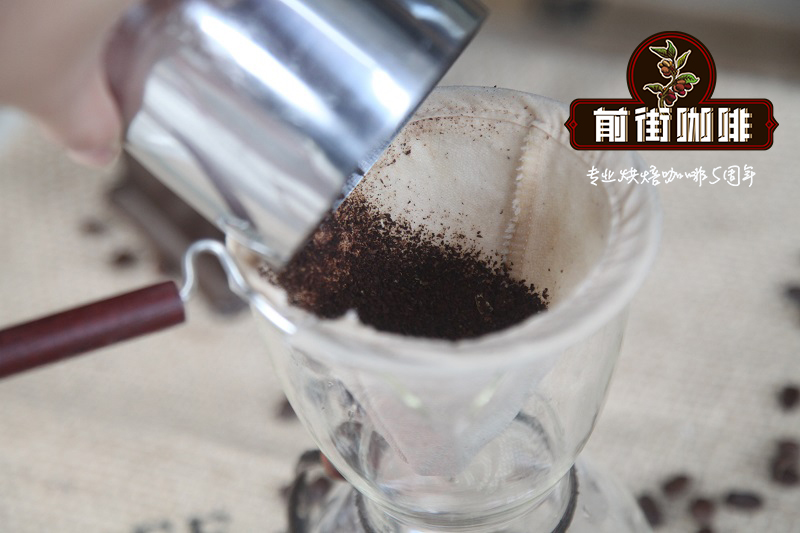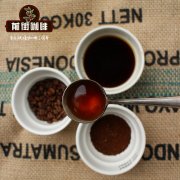The relationship between Mena reaction and caramel reaction? The process of roasting coffee?

Professional coffee knowledge exchange more coffee bean information please follow the coffee workshop (Wechat official account cafe_style)
After working in coffee roasting, I found that many reasons are the same. I found that Shengdou is like an actor, and the baker is like a director, who can direct the actor's life and death and fate in this play.
It can be said that, leaving aside the quality of raw beans, roasting is the biggest variable that affects the taste of the whole cup of coffee.
To me, baking is the smell of water, fire and wind that come together.
water
Many people may wonder why there is water, and is it possible to add water when roasting coffee beans? In fact, it is the water contained in raw coffee beans. Normally, the water content in coffee beans accounts for about 8-13% of the total coffee beans, so it is often heard that roasters discuss with each other how long it takes to dehydrate, or how much water coffee beans contain. In the whole process of baking, we will find that the coffee beans turn yellow and the bean surface expands rapidly at 150℃-160℃. Many people call this stage the "dehydration stage". But in fact, the moisture of the coffee beans has been removed almost during this period from dropping the beans to entering an explosion. This stage is the "dehydration stage" worthy of the name, and when the temperature is 150℃-160℃, the moisture will be greatly removed. Therefore, it will affect whether the whole baking is sandwiched or not, so I will call it the "breakpoint".
As we all know, water begins to lose from the surface of coffee beans. The temperature on the surface of coffee beans rises due to roasting, and the water evaporates, while the water in the center of the beans gradually moves toward the bean surface. You can do an experiment on this principle by yourself. For example, take a glass of water, put a Kleenex in the cup, put the remaining 2x3 outside, and after a while, you can see that the whole paper is drenched. This is the same truth, but after the moisture in the bean core is moved to the bean surface, the heat in the bean surface will evaporate, so it takes a certain amount of time to bake, rather than turning the heat to the maximum, and roasting the coffee beans black is called baking.
Because when roasting, the evaporation of water in the bean surface and the bean core is completely different, so sometimes when the bean is roasted too fast, it is easy to cause uneven moisture in the whole coffee bean. as a result, the skin has been vitrified, leaving only the bean core unripe, resulting in coffee with a strong astringent and grassy flavor.
Therefore, in the early stage of baking, we will pay more attention to the method of "steaming" for dehydration, that is, in the early 5-7 minutes (the data mentioned below are 1-2 kg). Let the moisture of raw coffee beans be more evenly distributed in every corner, in general, the use of small throttle and small firepower for dehydration, unifying the state of raw beans in the boiler. If the coffee beans are not properly dehydrated during steaming, there will be uneven baking and astringent taste.
Of course, the so-called "dehydration" does not mean to remove all the water from the coffee beans, because in the process of baking, water is more used as a heat conduction medium, so if we remove the water too early, then coffee beans lack of water to transfer heat to the bean core, it is also easy to trap, and the flavor will be more insipid.
Fire
The fire here mainly refers to the heat source. The sources of heat are direct fire, electric heating, infrared and so on. Theoretically, the heat source will not change too much taste, but the uniformity of the heat source will affect the taste of coffee. For example, direct fire and electric heating have the advantage of faster heating rate and higher penetration of flame, but the uniformity of boiler heating may not be as good as that of electric heating, which is bound to affect the effect of these two common heat sources on taste.
When most of the coffee beans are dehydrated, that is, at about 150-160℃, the whole bean shape will expand rapidly and the color of the bean will turn yellow. at this time, the coffee bean will be taken out with a sampling stick, and the coffee bean has begun to have some sweet aroma, indicating that the coffee begins to undergo the Mena reaction. Many bakers will increase their baking firepower here. In fact, what we have to deal with here is "chlorogenic acid", that is, to deal with the changes caused by chlorogenic acid through firepower, which is also closely related to the previous treatment of water.
I will be used to dividing the bitterness in coffee into good bitterness and bad bitterness. Good bitterness brings bitterness such as chocolate, cocoa and roasted nuts, while bad bitterness gives people the feeling of burning wood, smoking and so on. When we drink a cup of bitterness that makes you feel sweet and has a chocolate-like aroma, it shows that the coffee produces "chlorogenic acid lactone" during roasting, that is, the substance produced by the dehydration condensation of caffeic acid and quinic acid. this is because the quinic acid in chlorogenic acid loses a water molecule during dehydration, so it combines with caffeic acid to produce chlorogenic acid lactone, generally speaking. Such bitterness occurs only when the first stage is dehydrated with a high degree of completion. On the other hand, the bad bitterness comes from the vinyl catechol polymer produced by caffeic acid, which is generally found in coffee beans that fail to remove water. In the case of water removal failure, there are more water molecules, so there is a reaction of water decomposition, that is, the chlorogenic acid is decomposed into caffeic acid and quinic acid. Caffeic acid itself makes the coffee astringent. In addition, high temperature heating will produce vinyl catechol polymer, which will make the whole cup of coffee bitter and astringent.
IMG_1020
At the end of dehydration, bakers are faced with such a choice, when a little water is retained in raw beans, which makes chlorogenic acid face hydration decomposition reaction, so many bakers will use more firepower to make coffee beans pass through the hydrolysis zone quickly at 150160 ℃, so as to achieve the effect of dehydration and condensation.
The firepower is generally not adjusted too many times during the whole roasting process, but each adjustment is predicted by the roaster when he reacts inside the coffee beans, so that the whole cup of coffee has a better flavor level.
Wind
The wind here refers to the actual exhaust gas in the roaster boiler, that is, the wind pressure of the gas valve.
The baker's operation of the roaster is nothing more than the adjustment of firepower and exhaust capacity. Generally speaking, we will not make too many adjustments to firepower. On the contrary, there will be more adjustments in exhaust capacity. In the semi-direct firing machine, the adjustment of the air valve is not only used to exhaust smoke, but also to control the heat source by changing the air valve.
Different bakers will have different baking methods, some are accustomed to adjusting the firepower before the coffee beans enter the explosion, and some are used to increasing the firepower after the coffee beans enter the explosion, but no matter how the firepower is adjusted, the air valve will be adjusted accordingly. It should be said that the adjustment of the gas valve is no less important than the adjustment of firepower, but the purpose of the adjustment is more to ensure the balance of positive and negative pressure in the boiler, followed by the control of the air intake condition of the heat source, and finally to achieve effective smoke exhaust or the discharge of excess water molecules.
Because dehydration will determine the fate of coffee beans in the boiler, the removed water will often be discharged from the smoke exhaust pipe with a gas valve, so when we bake coffee beans to about 160℃, we will feel the gas with our hands, and we will feel that the gas is a little moist, which indicates that the water is being discharged. I once made a high temperature hygrometer and put it in the smoke exhaust pipe to test. It is a pity that due to the roaster, such a test does not produce reference value.
With my personal baking habits, I prefer to use a larger air volume to pursue the stability of hot air and to be able to dehydrate quickly. Of course, the use of a larger air volume to match the actual firepower situation, which requires everyone to adjust the air valve according to their own machines and baking habits.
Next, let's talk about the two most important reactions in coffee roasting, the caramelization reaction and the Mener reaction. In the official account of Maodong Cafe a long time ago (now the official account of Maodong Cafe has been renamed CHAICAFE), I have briefly introduced what the Mena reaction is, about … It was introduced three years ago. At that time, we didn't know much about the Mena reaction. I thought that the Mena reaction would occur only in coffee. It was later discovered that the Mena reaction occurred in all aspects of diet, so in order to study the Mena reaction, how much meat I ate over the past three years before I became this fat. At that time, I was still thin. I was handsome in the wind in Yushu.
Caramelization reaction
The sugar in the coffee bean is caramelized at about 170-200 ℃, which is exactly the melting point of sucrose (185 ℃) and the temperature of the explosion stage when the coffee bean is roasted. The product of caramelization is divided into two parts:
1. The dehydration product of sugar is caramel or sauce.
2. The pyrolysis products are mainly some volatile aldehydes and ketones.
Generally speaking, fire-roasted aroma, caramel and color are produced in the caramelization reaction, as well as other aromatic substances such as maltol, Cyclotene, furan and so on. These compounds can also be found in red wine, fruit juices, cream and other foods.
However, if caramel is too much in the baking process is not a good thing, but will cause carbonization, making the coffee dry and choking. If the caramel is not enough, it will make the aroma monotonous and lack of layers.
IMG_1019
Mena reaction
The unique aroma of roasted coffee beans, with the burning blue smoke smell of plant fibers, the sweet smell of creamy yellow, the brown smell of toast, and so on. Most of these rich flavors come from the Mena reaction during baking.
The Mena reaction can be divided into three stages.
First, at the initial stage:
Carbonylamine condensation Amadori molecular rearrangement
Second, in the medium term:
Amadori molecular rearrangement product fructosamine is dehydrated to HMF (hydroxymethylfurfural)
Deamination of fructosamine to reducing ketone
Interaction of amino acids with dicarbonyl compounds
Third, at the end of the year:
Aldol condensation
Polymerization of melanin
Caramelization: the process of molecular disintegration of "sugar" after heating.
Mena's reaction: "sugar or starch" is produced when cooked with ingredients such as "protein or amino acids", such as fried onions, toast and fried steak.
Caramelized vs. How on earth did the Mena reaction happen?
It is often said that coked onions are "caramelization", but in fact, only ingredients containing sugar will be caramelized. Sucrose will dissolve into a transparent liquid when heated to about 365 degrees Fahrenheit. If you continue heating, the color will turn yellow, light brown to dark brown, and finally even black carbon, which is the process of sugar dehydration. And sugar usually smells tasteless, until heated, the molecules begin to disintegrate and emit beautiful and complex volatile molecules, and produce sour and bitter taste, the darker the color, the more bitter the taste.
If sugar is cooked with proteins or amino acids, the Mena reaction (maillard reaction), or Maillard reaction, occurs. In addition to caramelization, some sugars interact with others to produce a series of chemical reactions to produce more diverse compounds. in short, the flavor is richer than caramelization, not just coffee beans. Chocolate, maple syrup, brewed beer and so on are all finished products of Mena's reaction.
Caramelization and Mena reactions each produce the following aromas:
Caramelization: sweet, sour, bitter, fruity, sherry-like smell, cream sugar, caramel, nuts
-Mena reaction: salty, floral, onion and meat, green vegetables, chocolate, potato and soil, the above caramelized flavor
In other words, the two will happen at the same time. However, the complex chemical interaction between caramelization and Mena has not been completely deciphered by scientists, and many compounds with full flavor can not be fully recognized.
How was the Mena reaction discovered?
French chemist louis-camillemaillard discovered the Mena reaction in 1912. He only wanted to study how amino acids bind to proteins, but found that when he heated sugar and amino acids at the same time, the mixture gradually turned brown. But in fact, before the 1940s, scientists did not know that the Mena reaction would produce various flavors. During World War II, many soldiers complained that egg powder, a substitute for eggs, turned brown when cooked and gave off an unpleasant smell. after numerous studies, scientists found that the unappetizing taste came from browning, although the egg powder was dehydrated and stored at room temperature. but the concentrations of amino acids and sugars are still enough to cause changes.
In the wake of the rise of the food processing industry, in order to avoid the overreaction of processed food to produce bad flavor, most of the research results were completed around the 1940 and 1950s, and scientists confirmed that the Mena reaction produced special "taste" and "smell". The most complete research report was done by John E.Hodge, and here are pieces of information for reference. however, there are still a series of puzzles unsolved.
Conditions for producing Mena reaction
You already know that the Mena reaction is due to changes in sugar, amino acids and proteins after heating, and it is also an attractive and delicious source. The basic conditions for successfully creating the Mena reaction are:
-protein
Reducing sugar: glucose, fructose, maltose, lactose, etc.
-High temperature
-keep it dry and dry.
Alkaline substances can speed up the reaction (unnecessary)
For example, ordinary caramel sauce and milk caramel sauce (dulce de leche) can clearly tell the difference between caramelization and Mena's reaction. The former boils sugar until the coke is turned off and then pours in dairy products such as whipped cream or cream. The latter slowly boil condensed milk over low heat for several hours, because it already contains protein at the beginning of heating, and the cooking temperature is lower than that of caramel, so each has its own flavor.
Since sucrose is not a reducing sugar, it will not directly cause the Mena reaction, but it will decompose into glucose and fructose during cooking, so you don't have to worry about adding reducing sugar.
What is the temperature at which Mena browning occurs? It's about 118 degrees Celsius. In other words, when the coffee beans begin to roast, the Mena reaction begins, that is, because of the Mayna reaction, the coffee can produce such a rich flavor in the process of roasting, it should be said that the whole roasting of coffee revolves around how to make the Mena reaction produce a better flavor.
Important Notice :
前街咖啡 FrontStreet Coffee has moved to new addredd:
FrontStreet Coffee Address: 315,Donghua East Road,GuangZhou
Tel:020 38364473
- Prev

Hand brewing coffee Tetsu Kasuya invented four or six flushing method, the role of off-water flushing method?
Professional coffee knowledge exchange more coffee bean information please follow the coffee workshop (Wechat official account cafe_style) 2016 World Brewers Cup champion, Tetsu Kasuya used his invention in the competition four six punch method, here a brief introduction to V60 ceramic filter cup, coffee powder 20g, rough grinding, water temperature 92 degrees, total water injection 300g will be divided into 40% and 60% total water injection
- Next

The Cooking method of French filter Pot French Press
Professional coffee knowledge exchange more coffee bean information Please pay attention to the coffee workshop (Wechat official account cafe_style) French filter kettle French Press brewing method, or French pressure pot, also known as French Press, is the most simple and convenient way to make coffee. In fact, this kind of pot appeared a long time ago, but people used to use it to make tea. Usually vesicle
Related
- Beginners will see the "Coffee pull flower" guide!
- What is the difference between ice blog purified milk and ordinary milk coffee?
- Why is the Philippines the largest producer of crops in Liberia?
- For coffee extraction, should the fine powder be retained?
- How does extracted espresso fill pressed powder? How much strength does it take to press the powder?
- How to make jasmine cold extract coffee? Is the jasmine + latte good?
- Will this little toy really make the coffee taste better? How does Lily Drip affect coffee extraction?
- Will the action of slapping the filter cup also affect coffee extraction?
- What's the difference between powder-to-water ratio and powder-to-liquid ratio?
- What is the Ethiopian local species? What does it have to do with Heirloom native species?

